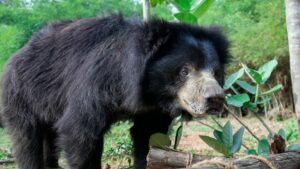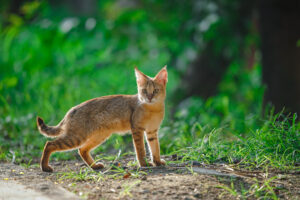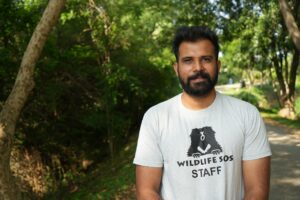When a forest falls silent, the sound of a single cry can carry for miles. That cry came from a one-month-old leopard cub, found alone in the Bah forest range of Agra, Uttar Pradesh. His mother was nowhere in sight. For a young cub, barely old enough to walk steadily, every hour of separation can mean the difference between life and death.
But this was far from being a story fated for loss…
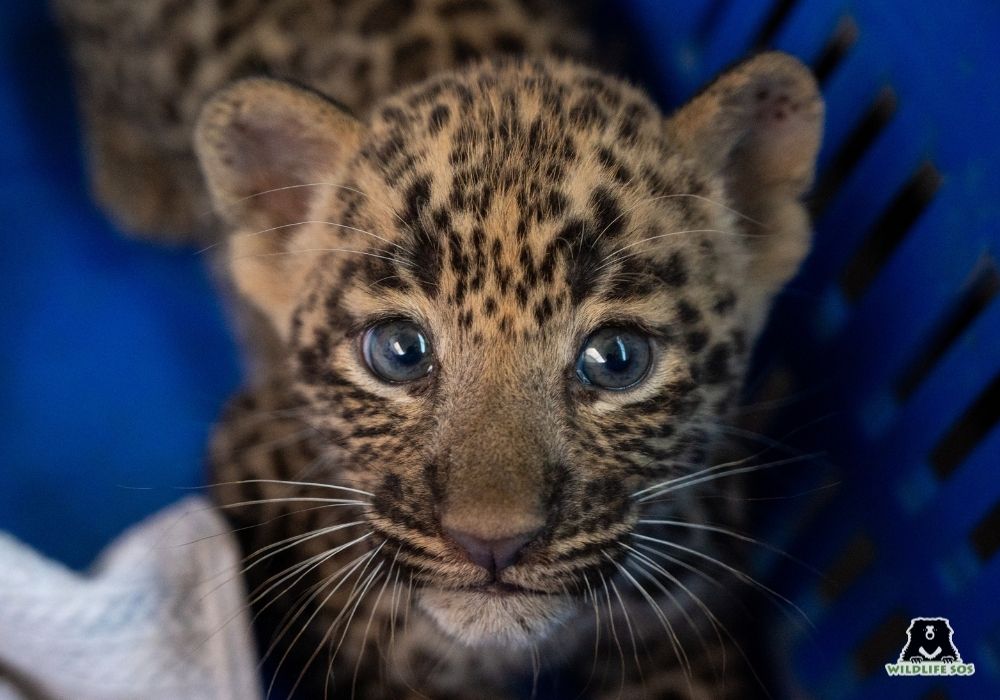
A Night in Bah Range
During the later part of August this year, forest officials of the Bah range in Uttar Pradesh discovered the tiny male leopard cub, apparently separated from his mother, desperately crying for help. The local residents were quick enough to inform the officials about the incident. Recognising the urgency, the forest team attempted to reunite the cub with the mother in the same area where he was found. When initial attempts did not bear fruit, it was decided to shift the cub to Wildlife SOS’s transit facility in Agra to ensure the cub’s safety. Our veterinarians conducted a thorough checkup and found the cub to be healthy and active. He was provided with warmth, hydration and nutritional care, which included a specialised formula milk mimicking that of his mother’s.
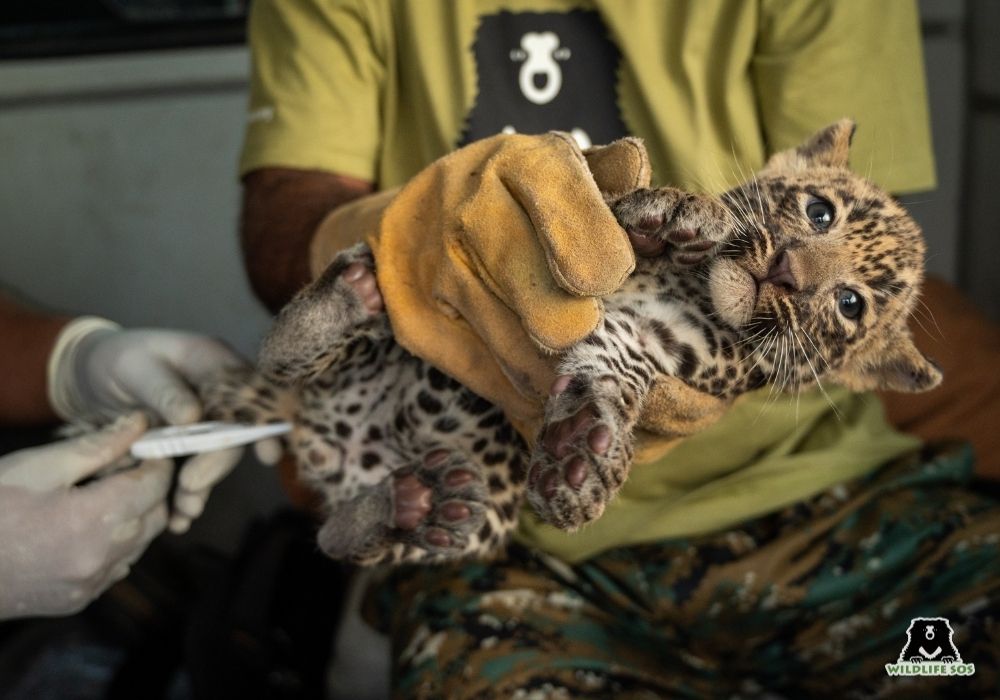
A decision was made to reattempt the reunion of this cub with his mother. The following day, as dusk fell over Bah, a team from Wildlife SOS, accompanied by the Uttar Pradesh Forest Department, returned to the exact same location where the cub was first spotted. Following strict reunion protocols, the cub was carefully placed in a secure, well-ventilated box lined with hay and grass that was kept at an elevation above the ground. A camera trap was installed nearby to record and monitor the entire process from a distance. The team gradually retreated, leaving the cub safe inside the box. Moments later, the camera trap captured the mother appearing from the thickets, approaching the box with caution, slowly sniffing it, and when she caught the familiar whiff of her cub, she gently pulled the cub out from the box by the scruff of his neck and disappeared into the darkness of the night. For the awaiting teams, it was finally a moment of pure bliss, a story of another successful reunion of a mother leopard and her cub that Wildlife SOS, in collaboration with the forest department, has achieved.
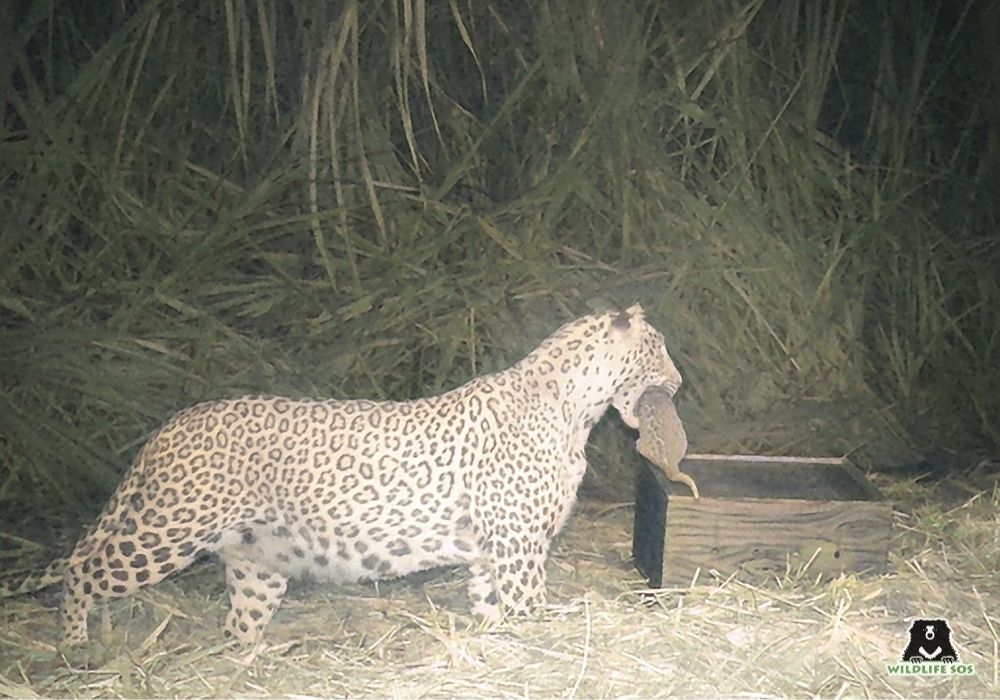
The Science of Reunion
This success did not happen overnight. It was achieved through years of study, refinement and practical experience. In a 2022 report released, it has been estimated that Central India holds the highest leopard population at 8,820 individuals, with Madhya Pradesh home to the largest number at 3,907. Maharashtra, with an approximate 1,985 leopard count, is the second-largest state hosting these big, rosetted cats. Although this reunion case happened in Uttar Pradesh, finding lost, helpless cubs in farm fields is recurrent in Maharashtra, where our Manikdoh Leopard Rescue Centre (MLRC) stands. To date, Wildlife SOS, in collaboration with the Maharashtra Forest Department, has successfully reunited 112 leopard cubs with their mothers. This tremendous success has been achieved over four districts of Maharashtra, which are Ahmednagar, Pune, Satara and Nashik. The 73 operations that bore such a mighty result led to the development of a standard operating procedure, built on a powerful principle: the mother is the best caregiver for her cubs. In rural India, cubs are often discovered in sugarcane fields during the harvest season, and humans often mistake them for being abandoned or orphaned. The reality is surprisingly a stark contrast. With forests rapidly disappearing, female leopards often seek refuge in the thickets of sugarcane fields to hide their cubs while they go in search of prey. When found by farmers, they often misinterpret the situation, leading to unnecessary separations.
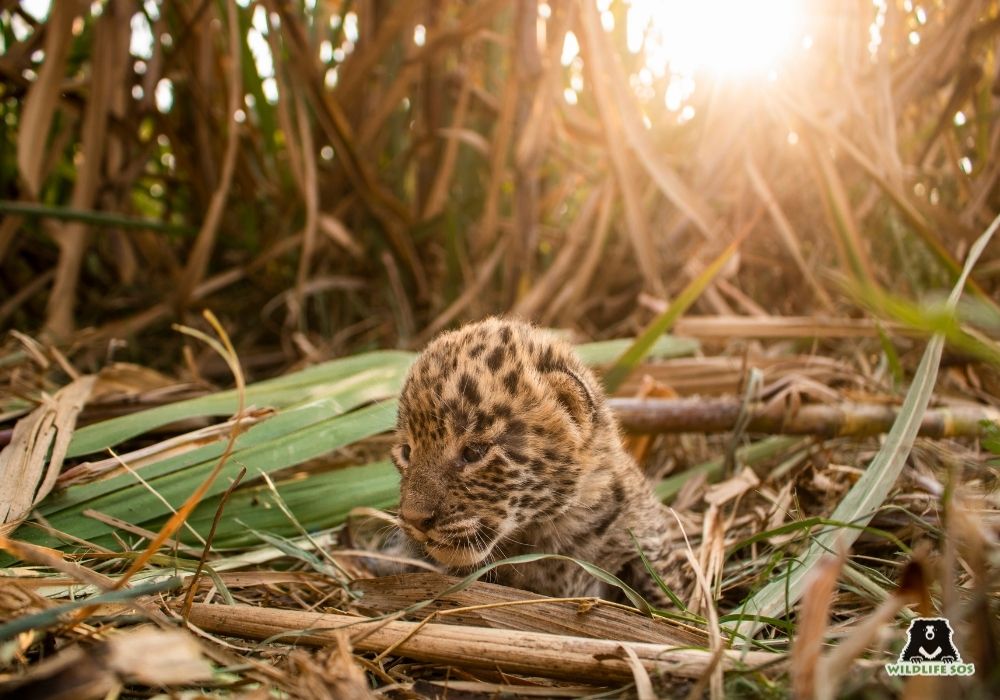
To counter this, Wildlife SOS and the forest department designed a reunion process guided by both science and empathy. Key steps include:
- Rapid response: It has been found that the chances of reunion success decrease sharply with time, so prompt intervention is critical.
- Comprehensive health check: Separated cubs rescued first undergo veterinary examination to ensure they aren’t malnourished or weak, in which case they are given urgent nourishing care before the reunion.
- Controlled placement: Once declared fit, the cub is placed in a safe, ventilated box at the location from which they were found. This usually is done at dusk, the ideal time since leopards become most active then.
- Minimal human interference: Once positioned, the area is vacated to allow the mother to approach naturally.
- Monitoring through camera traps: The entire reunion process is recorded, which confirms successful retrieval.
Beyond welfare, such reunions are invaluable to conservation: every successful return strengthens the wild population, preventing needless captivity or hand-rearing. To read the entire research conducted by Wildlife SOS, click here.
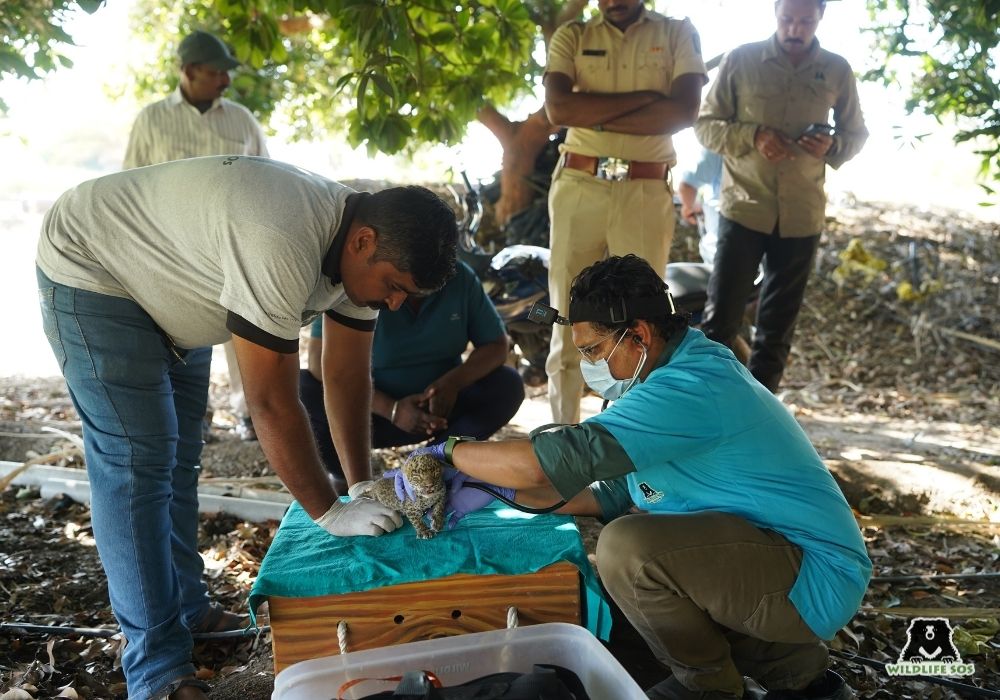
Why It Matters
Leopards are one of the most adaptable big cats found in India, and their adaptability oftentimes brings them into conflict situations with humans. When farmers find cubs in sugarcane fields, their first reaction is one of panic. To mitigate this, widespread awareness and education are needed. This is where Wildlife SOS, in collaboration with local forest departments, are trying to bridge the gap, educating villagers and carrying out different awareness outreach sessions. The successful cub reunion in Agra is a result and outcome of such attempts. The local community’s prompt reporting, combined with the quick intervention of the forest department and Wildlife SOS, allowed the cub to be reunited with its mother within a short time.
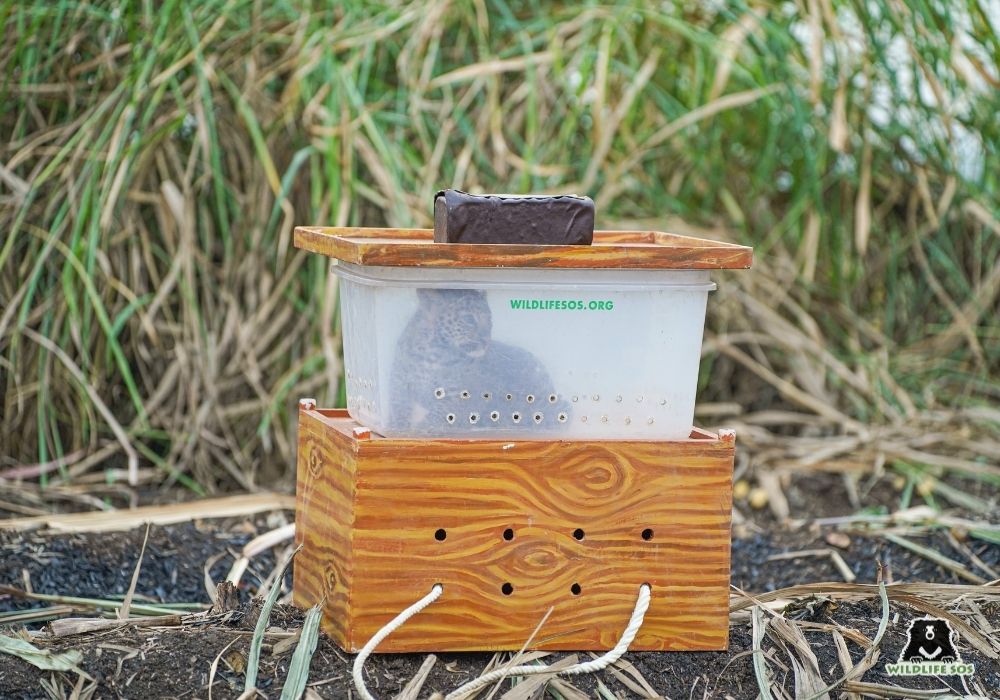
Incidents of separation will unavoidably keep happening as human expansion continues to encroach on natural habitats. However, every such incident can be handled with knowledge and empathy rather than fear — reunion procedures need to be followed, rescue teams require professional training, and the public must be aware enough to cooperate in saving wild animals. By doing so, a future where wild leopard mothers and their cubs stay together, where forests resound not with cries of distress but with the rhythms of a lively habitat, can be made possible, just as we got one step closer in doing so with the successful reunion that took place in the Bah forest.
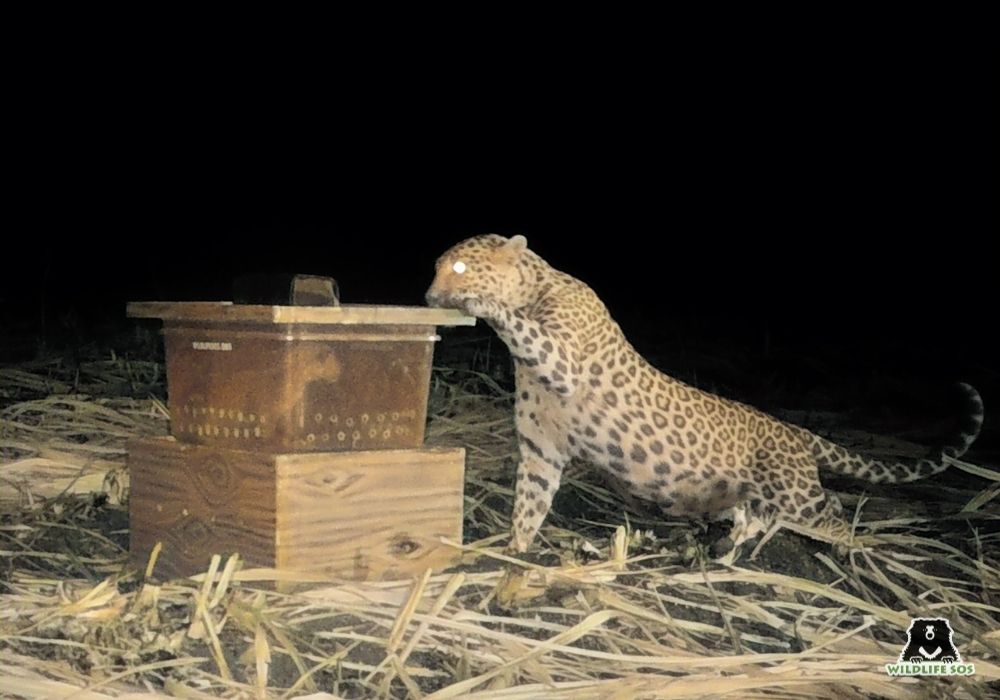
Soon after dusk, the mother emerges from the forest, approaches the box, and gently carries her cub away to safety. [Photo © Wildlife SOS/ Akash Dolas]
If you happen to come across a wild leopard in a crisis, remember that your prompt action could save a life. Reach out to Wildlife SOS’s 24-hour emergency rescue helpline, available in four regions, and become a part of a life-saving tale:
Delhi-NCR – +91-9871963535
Agra & Mathura in Uttar Pradesh – +91-9917109666
Vadodara, Gujarat – +91-9825011117
Jammu & Kashmir – +91-7006692300, +91-9419778280
Feature image: Akash Dolas/ Wildlife SOS


